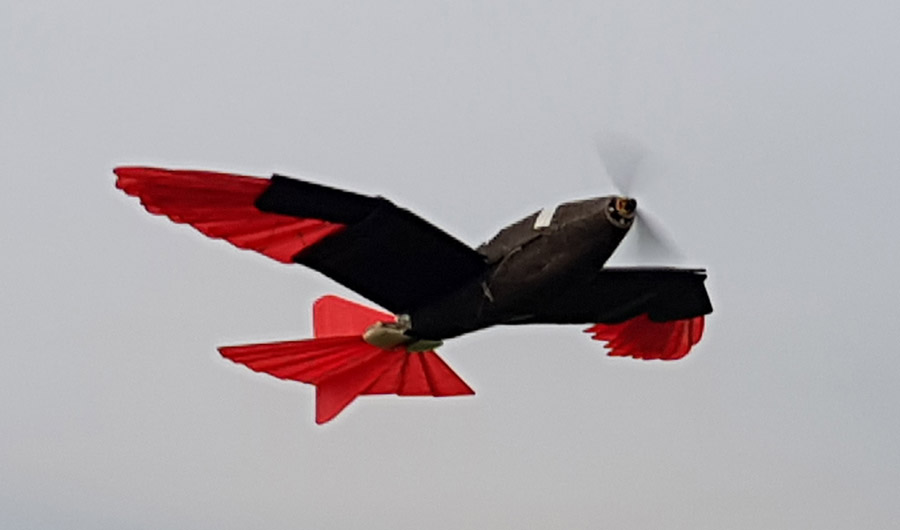A Robot Hawk Takes to the Skies

The robotic hawk flies through the air.
Enrico Ajanic, EPFL
(Inside Science) -- An aerial robot inspired by a fast-flying hawk soared, turned and wheeled over a Swiss field last year, during tests to discover the capabilities of its new shape-changing design.
Researchers say it could lead to drones that can fly for much longer than conventional "quadcopters" can and land in short distances -- perhaps even on perches -- by mimicking the behavior of birds.
Conventional aircraft wings are built to generate lift at an optimum speed, but they are much less useful at slower and higher speeds, said project leader Enrico Ajanic of the Federal Institute of Technology in Lausanne, Switzerland. Some aircraft get around this by extending large flaps from the wings at low speed, such as during landings.
The hawk-inspired drone, however, overcomes that limitation by spreading or tucking in movable "feathers" on its wings and tail, adjusting their lift and drag to suit the flying conditions.
The robot hawk -- dubbed LisHawk, after the Laboratory of Intelligent Systems where Ajanic is a doctoral student -- is based on the northern goshawk, a high-speed bird of prey favored in the Middle Ages for falconry.
Northern goshawks are also one of the few birds of prey that hunt inside forests -- a highly cluttered environment, like cities or the insides of buildings, that the researchers hope their flying robots will eventually be agile enough to master. "It is the optimum that we would like to achieve at some point," Ajanic said.
The LisHawk is made from carbon fiber and plastic, with dimensions similar to the northern goshawk; the artificial "feathers" on its wings and tail are attached to rods and cables so they can be spread or tucked in on command, and it has a propeller on an electric motor at the front.
Ajanic said the interaction between the wings and the tail proved to be the key to greater agility; when they were both spread, the drone generated high lift at slow speeds, and at high speeds the LisHawk could change the shape of its wings and its tail to maneuver sharply.
Indoor and outdoor flight tests showed that switching between having the wing and tail feathers spread or retracted increased the robot's agility, stability, power efficiency and top speed. The research is published in the journal Science Robotics.
So far the LisHawk has only been flown under radio control by humans. In the next stage of the project, the researchers plan to deploy an artificial intelligence system to allow the drone to fly by itself and learn how to best use its shape-changing flight surfaces, Ajanic said.
